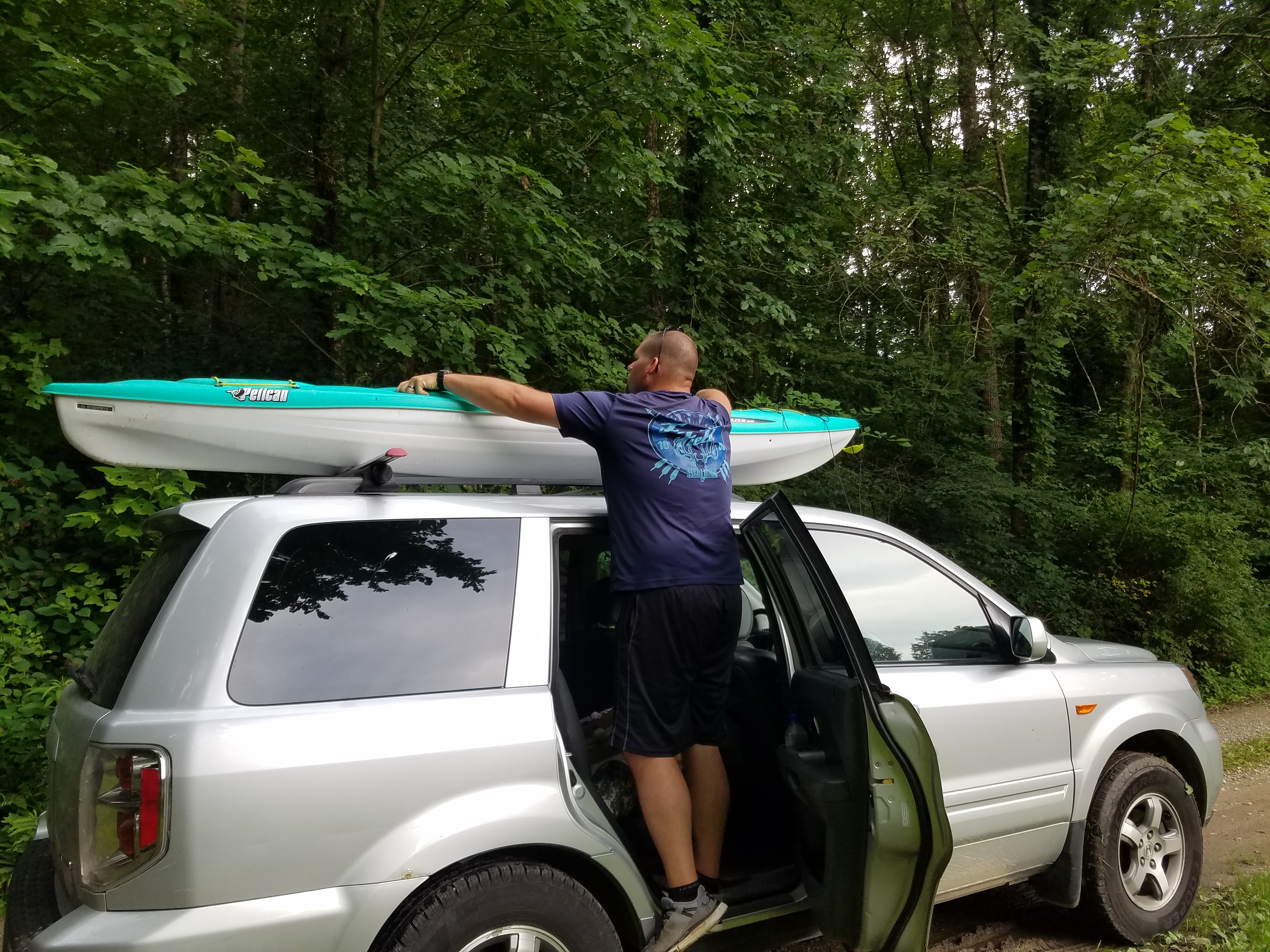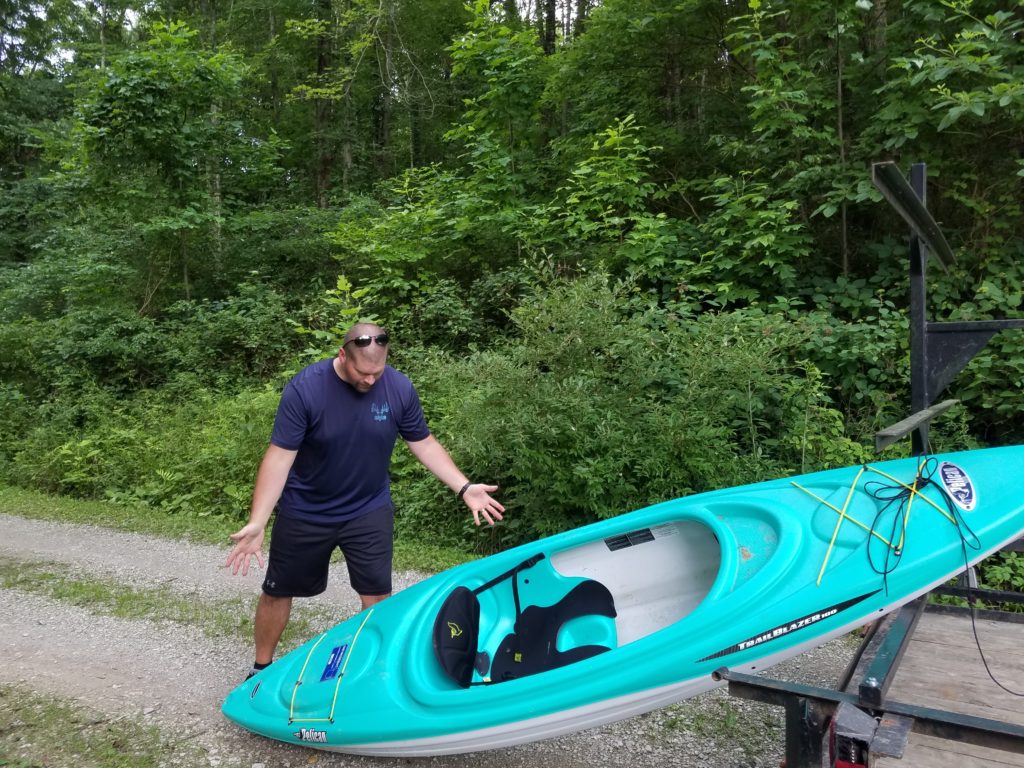Inspired by recent events, I felt compelled to mention the importance of properly tying down your boats before leaving on your next adventure. We will post on how to properly load and secure your boat in another article.
The Setup
So while I was waiting for the street to close for an Independence Day Parade, a truck with a trailer loaded with five (5) kayaks stopped suddenly in the middle of the road, right in front of me. Why? Because one of the kayaks fell off of the trailer completely and was nearly ran over by the following vehicle. Fortunately, the driver noticed the fall and three people jumped out of the truck to gather the freed boat. Quickly the group threw the kayak back on top of the other four boats and tried tying the load with a couple bungee cords.
Tying Down Your Boat

Regardless of the age, type or style of your watercraft, you need to secure your boat. Although it is easy to pick up a cheap kayak from any big box store, your boat is an investment. You should be treating your boat as you would anything else of value. The reality is that we all get tired, we forget what we did a minute ago and we can get distracted. None of these are a valid excuse for not double checking your equipment before setting out on your next adventure.
Failure to secure and check the load is a lack of respect for the boat and for other drivers. There is absolutely no reason that any boat should ever fall off of a vehicle. If it isn’t properly secured, get the right ropes, straps, or other lashing. A few dollars for extra straps is an easy investment compared to the damage that can be done to persons or property should your boat come free.
Accepting Responsibility
The rules of the road state that the driver of the vehicle is responsible for the load, so even if you trust your friend to strap everything down, if you are driving, it is your job to make sure that it is secure. Take the extra time when tying everything down to make sure it is secure. Once you have confirmed that your load is secure, remember that the load can shift. Wind resistance and vibration from the road can affect your load. A good rule is to check the load after one mile, ten miles, and every 100 miles thereafter.
Final Thoughts on Tying Down Your Boat
As paddle sports continue to grow in popularity, more and more people will be hauling boats and other gear every float season. Make sure to do your part in keeping the road way safe on the way to and from the water. If we all work together, we can keep paddle sports growing in safety and popularity. Don’t forget to scout the area before you float. Click here to read why. Be safe, and we will see you on the water.

